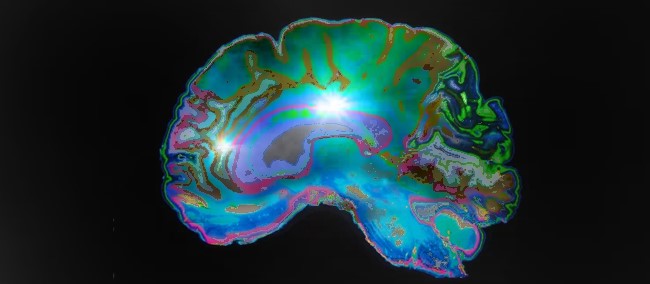
For centuries, scientists and philosophers have been fascinated with learning about the brain. However, it hasn’t been until the last few decades that we’ve really been able to examine this complex organ in action. One advanced technology that has revolutionized our understanding of the human brain is magnetic resonance imaging (MRI). While this method has been extremely useful for measuring neural activity, it hasn’t been used to assess gene regulation – that is, until now.
The University of Illinois (U of I) Urbana-Champaign recently announced the development of a new 3D imaging technique called epigenetic MRI (eMRI). This first of its kind technique captures DNA methylation changes in the brain – a key epigenetic mechanism associated with many cognitive and neurological functions.
Although the tool has only been used to study pig brains, the researchers who worked on the project say it will easily translate to humans, given the strong similarities between pig and human physiology. The method uses standard MRI technology and established biological markers to directly image DNA methylation changes in living subjects.
DNA methylation is a stable epigenetic modification essential for regulating processes involved in brain development, learning, memory, and diseases. Its purpose is to signal cells which genes should be actively expressed or not.
“Our DNA is the same from cell to cell and it doesn’t change,” said Dr. King Li, study co-leader and professor at U of I’s Carle Illinois College of Medicine. “But tiny molecules, like methyl groups, are attached to the DNA backbone to regulate which genes are actively being transcribed into RNAs and translated into proteins. DNA methylation is a very important part of the control of gene functions.”
Li worked alongside a multidisciplinary team of researchers at U of I, including co-leaders Fan Lam, professor of bioengineering, and Gene Robinson, professor of entomology and director of the Carl R. Woese Institute for Genomic Biology.
Robinson, whose prior work includes studying honeybee behavior, says that DNA methylation changes have been shown to occur in the brain of animals in response to their environment. For instance, his research has found that genes in the brain of bees can become downregulated or upregulated as they age or when exposed to new experiences and danger.
The brain controls the body using two systems: neuronal activation, which occurs within a short time (seconds or less), and gene expression, which occurs over a longer period. The U of I team focused on the later control system. “[This is] the molecular control system, which relies on gene expression,” said Robinson. “These changes can take minutes to occur, but can last for hours, days or even longer.”
Techniques to study the molecular changes over time have been limited so far, as they require invasive sampling and tissue processing. Most animals studied for epigenetic research are generally dissected for analysis. As well, prior efforts to map gene expression and regulation in the brains of living organisms were unable to specifically target the epigenetic change. Li and his team wanted an approach that could directly image epigenetic patterns without destroying the subject or the brain tissue.
To noninvasively map DNA methylation in the brain, the researchers combined magnetic resonance spectroscopic imaging with stable isotope labeling of methylated DNA via diet. They chose a carbon-13-methionine (13C-Met) rich diet because it is an essential naturally occurring amino acid and a primary methyl group donor for DNA methylation. It has also been previously imaged on an MRI and is safe for human use.
Initially, testing was done on rat models, but the team switched to pigs at the advice of co-author Ryan Dilger, animal sciences professor at U of I and expert on pig neurodevelopment. The reason is that pig brains are more comparable to human brains in size and development. Plus, they can be examined using clinical-grade neuroimaging instruments.
For the experiment, a number of piglets were fed a 13C-Met enhanced diet starting from postnatal day one. This continued for 10 to 32 days, upon which imaging was performed. As anticipated, the MRI successfully detected an increasing amount of 13-C labeled methyl groups in the pigs fed the special diet. A control group was also assessed. The findings were exactly what the team hoped for – more new DNA methylation at 10 days and even more at 32 days.
The eMRI also showed strong regional differences in global DNA methylation. This was supported by measuring global methylation levels in tissue samples from selected regions using a well-known commercial ELISA.
“It is known from animal studies that brain regions that are most involved in learning and memory experience more epigenetic changes,” says Li. “There also were regional differences in DNA methylation across the pig brain, just like there are regional differences in classical MRI studies.”
Li says they next plan to use the new eMRI technique for human studies, most likely to examine the brains of people with neurodegenerative disease. “Getting this label into the brain is easy and does no harm to the body,” he says. We’ll give it to people through the diet, and then we can detect the signal.”
Given the noninvasiveness of the method, the researchers believe that the eMRI will become a powerful and sought-after epigenetic tool. They stated, “We expect that the eMRI signal, both as a measure of regional epigenetic activity and as a possible surrogate for regional gene expression, will enable many new investigations of human brain function, behavior, and disease.”
Source: F. Lam et al. Epigenetic MRI: Noninvasive imaging of DNA methylation in the brain. Proceedings of the National Academy of Sciences, March 2, 2022;119 (10).
Reference: Diana Yates. Team uses MRI to image epigenetics in the brain. University of Illinois at Urbana-Champaign, February 28, 2022.

